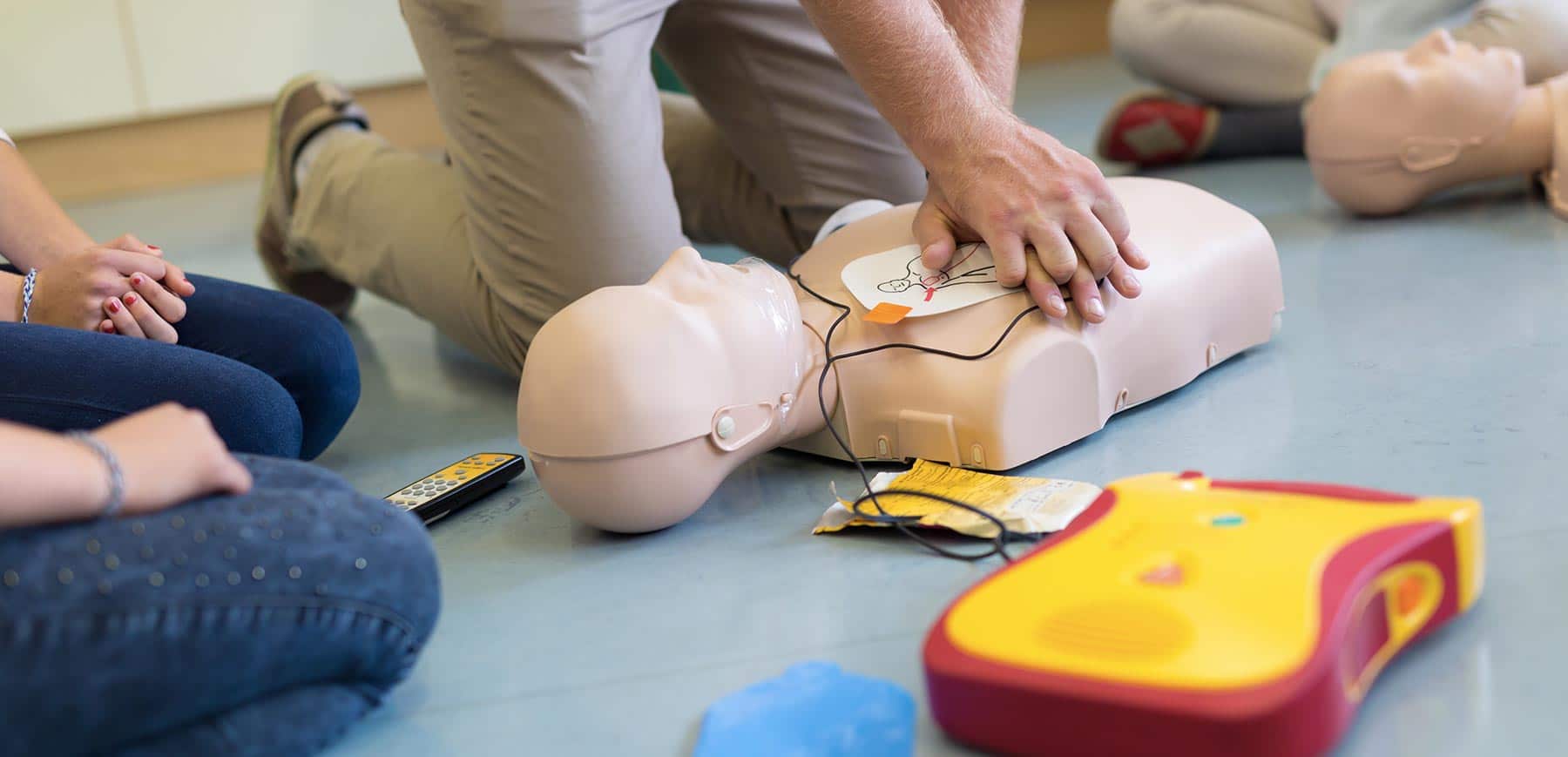Would you know what to do when suddenly someone collapses at work or in a public space? This scenario might sound alarming, but it’s crucial to know what to do in emergencies, particularly when it comes to sudden cardiac arrest. One invaluable tool in such situations is an AED, but what exactly is it, and when do you need to use one?
What is an AED?
An AED, or automated external defibrillator, is a portable device designed to detect abnormal heart rhythms and deliver a therapeutic shock to restore the heart’s normal rhythm. An AED works by analysing the heart’s rhythm through adhesive electrodes and, if necessary, administers an electric shock to reset it.
AEDs are proven to save lives and they are becoming a necessary addition in the workplace to health and safety provision for your employees. They are also found in places people gather such as shopping centres and garages.
When Would You Need to Use an AED?
If someone suddenly collapses, unconscious, with no pulse, then this could be a sign of sudden cardiac arrest, a life-threatening condition. Sudden cardiac arrest can be caused by various factors, including underlying heart conditions, electrical disturbances in the heart, or external factors like trauma or drug overdose.
In such dire moments, every second counts. Using an AED promptly can significantly increase the person’s chance of survival by restoring their heart rhythm.
Importance of AEDs in Cardiac Emergencies
In cardiac emergencies, such as sudden cardiac arrest, timely intervention is critical. While waiting for emergency medical services to arrive, initiating CPR and using an AED can make all the difference between life and death.
When used promptly alongside CPR, AEDs can significantly increase the chances of survival for someone experiencing sudden cardiac arrest. Survival rates decrease by about 7-10% for every minute defibrillation is delayed.
How to Properly Use an AED
You don’t need to be a medical professional to use an AED effectively, but taking a training course is highly recommended. Basic Life Support courses teach you everything you need to know, from recognizing when to use an AED, administering CPR alongside it, and emergency response protocols, empowering you to act confidently in critical situations.
AED Accessibility and Placement
AEDs should be readily accessible in public spaces and workplaces. Strategic placement in areas with high foot traffic, such as airports, shopping centres, and schools increases the chances of swift intervention during emergencies. After all, you never know when a cardiac emergency might strike.
AED Maintenance
If you are intending to buy an AED for your business, or you already own one, it is important to ensure it is always ready to be used. Regular maintenance ensures that the device remains in optimal condition when needed. From checking the battery status to inspecting the electrode pads, proper upkeep ensures reliability during critical moments.
AED Training and Certification
Knowledge is power, especially when it comes to saving lives. Investing in AED training and certification equips individuals with the skills and confidence to respond effectively in emergencies. Whether you’re a parent, teacher, or office worker, knowing how to use an AED could mean the difference between life and death.
Knowing how to respond to cardiac emergencies is empowering and AEDs offer a chance to restore life when every second counts. By understanding what AEDs are, how they work, and when to use them, we can all play a part in safeguarding our communities.




